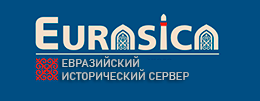-
Постов
29453 -
Зарегистрирован
-
Посещение
-
Победитель дней
466
Тип контента
Информация
Профили
Форумы
Галерея
Весь контент asan-kaygy
-
Жалко не по родам
-
П.С. Была бы гаплогруппа у Алшинов невосточно-азиатская (или хотя бы старкластер) то под моей версией не было бы генетических аргументов. А так они прямо показывают что Алшины именно с того же региона что и алчи-татары и при этом они не нируны.
-
Потому что их к 14 веку стали короче называть алчинами. А тождество этих названий описано у Рашид ад-Дина. К 15 веку ергенекты уак стали короче называть ергенекты, к 16 веку абак керей стали назваться абак, к 17 веку ашамайлы керей стали сокращенно называть ашамайлы (но никак не керей! ) к 19 веку токал аргынов просто ТОКАЛ!!! . А тождество этих названий описано у Рашид ад-Дина: "Тех татарских племен, что известны и славны и каждое в отдельности имеет войско и [своего] государя,--шесть, идущих в таком порядке: татары-тутукулйут, татары-алчи, татары-чаган, татары-куин, татары-терат, татары-баркуй. Племя тутукулйут -- самое уважаемое из [всех] татарских племен. Есть такой обычай, что всякий человек, который происходит из этого племени, если он будет мужчина, его называют -- тутукулитай, если же он будет женского пола, то называется --тутукуличин. [Происходящие] из [племени] алчи-татар [называются] алчитай и алчин; из племени куин-татар,-- куитай и куичин, [из] племени терат-- терати и тераучин." Асан кайгы,браво, мало того, что всех Алшынов сделал Татарами, но еще и женщинами . Вы статью мою почитайте, персоязычный еврей Рашид ад-Дин в ньюансах монгольского языка не разбирался. Поэтому он напутал. окончание тай в монгольском языке это окончание одного из падежей. Поэтому были Хушитай Байку из племени хушин (он одновременно Хушитай и хушин, но не мужчина и женщина одновременно) и Чагатай кучук сунит, которого потом прозвали Сунитай (который одновременно и Сунитай и сунит).
-
Владимир Усанин, вроде а не Вадим Урасин.
-
Какие то данные сомнительные
-
Намекните хот о чем речь. Неужто тайну его происхождения раскроют? Хотя это по вашей же части больше. Воинские подвиги Джучи в 1220-25 годах, плюс локализация его ставки, которую унаследовал Орда эджен. ))))
-
Потому что их к 14 веку стали короче называть алчинами. А тождество этих названий описано у Рашид ад-Дина.
-
Карта неправильная
-
Сейчас Темиргалиев Радик готовит статью по Джучи. Там будет супер инфа по биографии Джучи ))))
-
После смерти Джучи и Чингис хана остальные начали с аппетитом посматривать на Улус Джучи. Огедей даже забрал часть земель по тихому. По заговору Кублая, Хулагу, Боракчин хатун и Алгуя Улус Джучи должен был разделен между Хулагу и Алгуем. Но не получилось... Берке сдружился с Мамлюками и сохранил целостность улуса, и даже привел его к независимости фактической. Это где это вы такое вычитали? Видимо отсюда ))) Сабитов Ж.М. Политическая история Улуса Джучи в 1256–1263 годах//Золотоордынское обозрение. Казань. № 2. 2015. С. 51-64 https://www.academia.edu/15785692/%D0%A1%D0%B0%D0%B1%D0%B8%D1%82%D0%BE%D0%B2_%D0%96.%D0%9C._%D0%9F%D0%BE%D0%BB%D0%B8%D1%82%D0%B8%D1%87%D0%B5%D1%81%D0%BA%D0%B0%D1%8F_%D0%B8%D1%81%D1%82%D0%BE%D1%80%D0%B8%D1%8F_%D0%A3%D0%BB%D1%83%D1%81%D0%B0_%D0%94%D0%B6%D1%83%D1%87%D0%B8_%D0%B2_1256_1263_%D0%B3%D0%BE%D0%B4%D0%B0%D1%85_%D0%97%D0%BE%D0%BB%D0%BE%D1%82%D0%BE%D0%BE%D1%80%D0%B4%D1%8B%D0%BD%D1%81%D0%BA%D0%BE%D0%B5_%D0%BE%D0%B1%D0%BE%D0%B7%D1%80%D0%B5%D0%BD%D0%B8%D0%B5._%D0%9A%D0%B0%D0%B7%D0%B0%D0%BD%D1%8C._2._2015._%D0%A1._51-64
-
Племя кытай. Данные по 50 каракалпакам есть
-
Все нашел http://www.nature.com/ejhg/journal/v23/n10/full/ejhg2014285a.html
-
Рахмет
-
Напомните как работа называется откуда гаплотипы?
-
Подтверждается что это рода разного происхождения по мужской линии и союз племен
-
Вроде ошибок там нет, но лучше смотреть отдельные шежире каждого из семи подродов. они более подробны
-
Они не родня алшинам по генетике и между собой также
-
Золотоордынское обозрение № 2. 2016. http://goldhorde.ru/RU/tekushhij-nomer/ СОДЕРЖАНИЕ Публикации Khakimov R.S. The Combination of Nomadic and Hierarchic Principles within the State Organization in the Golden Horde Борис Черкас. Город Золотой Орды в украинской степи: возникновение, эволюция, упадок Роман Хаутала. От Бату до Джанибека: военные конфликты Улуса Джучи с Польшей и Венгрией (1) Хайдаров Т.Ф. Рубикон Улуса Джучи Roman Hautala. Latin Sources on the Religious Situation in the Golden Horde in the Early Reign of Uzbek Khan Якушечкин А.В. К вопросу об обстоятельствах прихода к власти Хаджи Гирея Гулевич В.П. К вопросу о причине нападения крымского хана Менгли Гирея на Киев (1482 г.) и разрыва мира с польским королем Казимиром Ягайловичем (по генуэзским документам) Маслюженко Д.Н. Символ власти в источниках по истории Тюменского юрта Моисеев М.В. Ногайская Орда в системе международных отношений рубежа XV–XVI вв. Думин С.В. Татарские царевичи в Великом княжестве Литовском (XV–XVIII вв.) Дискуссия Исхаков Д.М. Термин «татаро-монголы»: этническое или политическое понятие? Источниковый и содержательный аспекты Наследие Абу Бакр Каландар. Каландар-наме. Глава 8 Рецензии Пилипчук Я.В. Рецензия На книгу Черкас Б.В. Західні Володіння Улусу Джучі: політична iсторія, tериторіально-aдімінстративний Устрій, Економіка, Міста. К.: Інститут Історії Нан України, 2014. 369 с. Сафаров Р.Т. Слово об «Этимологическом словаре татарского языка» Хроника Абибуллаева Э.Э. Крымская конференция Аксанов А.В. Научный семинар «Восточные улусы казанского ханства»
-
В общем да (за исключением жетиру и еще может мелкие алшинские подроды), но каждый момент надо проверять отдельно?
-
Слава богу из 900 случаев всех тестированных (670 казахи) таких семей было 2, а пары отец сын около 5.
-
Коммерческие любой может заказать, а в научную выборку попасть можно если вы соответствуете научным критериям проекта (например представитель т ой популяции которая исследуется)
-
Рад что вы умеете гуглом пользоваться. Большая часть процитированных вами людей мои соавторы. мы можем спорить где-то не соглашаться, но в итоге делаем совместные статьи приходя к консенсусу. Каржавина я уважаю, но вы реально всерьез согласны с его концепцией? или вы о ней просто не знаете?
-
Я рад что вы так за науку болеете, но какое вы к ней отношение имеете, Написали ли вы кучу научных статей или исследовали ли вы хотя бы самого себя на ДНК протестировали, прежде чем говорить что я там что-то фальсифицирую и замалчиваю (кстати на вопрос об этом вы не ответили)? Ельтай был родней Кыдырбаю судя по ДНК, так что это не просто кирме а родственник. Я пользуюсь не только книгой Алшин шежиресы. И не считаю что это источник полный 100 % информацией. Вся эта инфа проверяется генетически. П.С. В чем ваша беда вы верите в старые советские и постсоветские лингвофрические сказки, в то время как я использую инструментарий генетики для верификации и проверки шежире. Я делаю что-то новое, вы пересказываете что-то старое.



